Rattle Item Number: 1934.1072 from the MAA: University of Cambridge
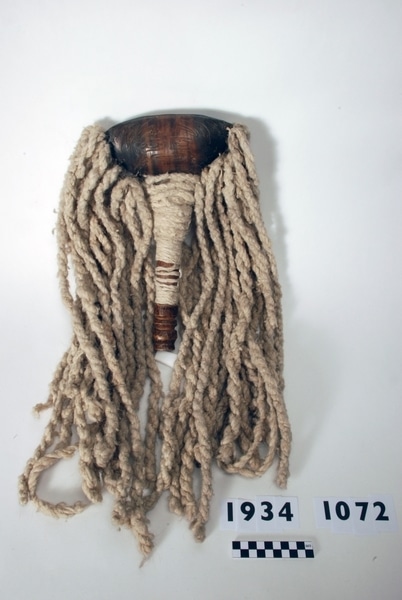
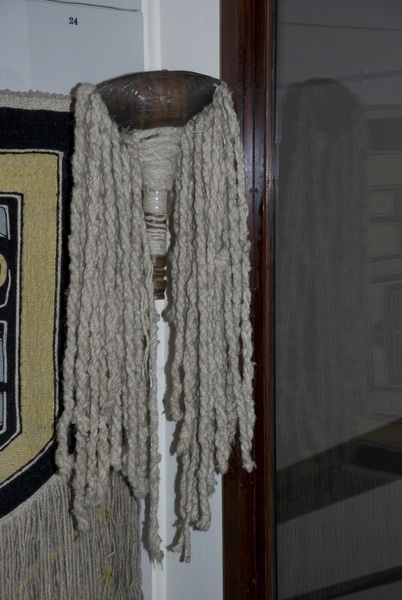

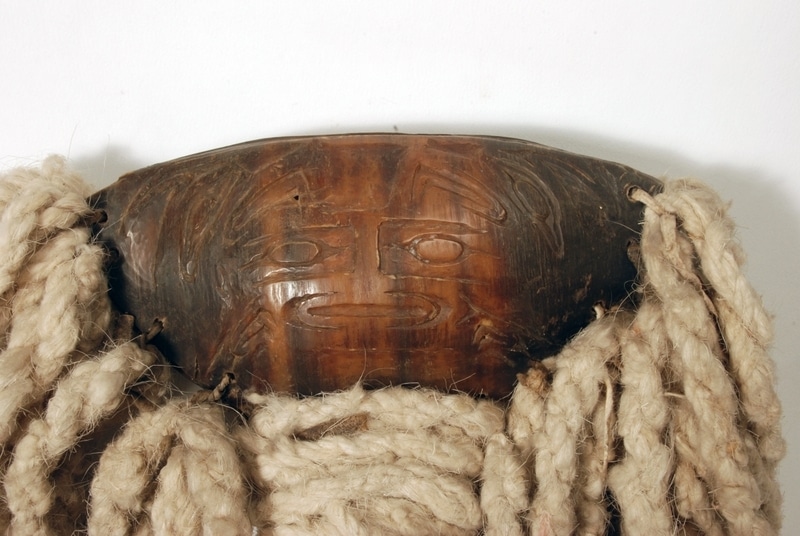
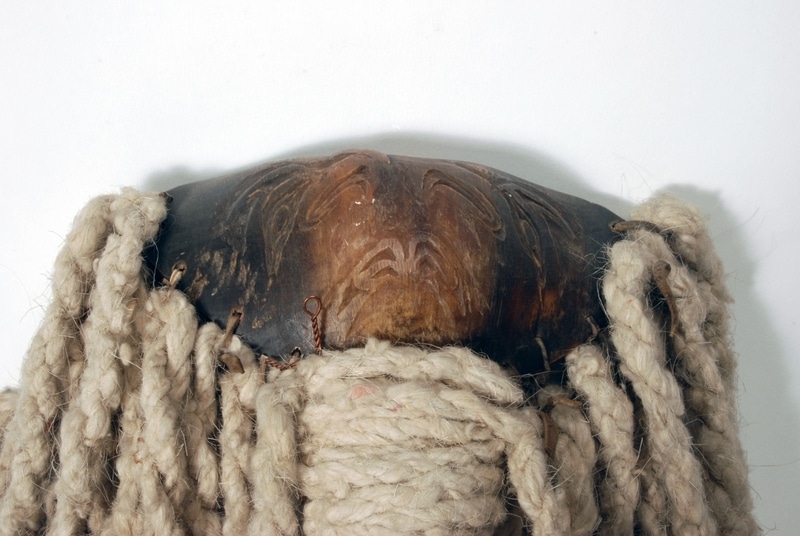
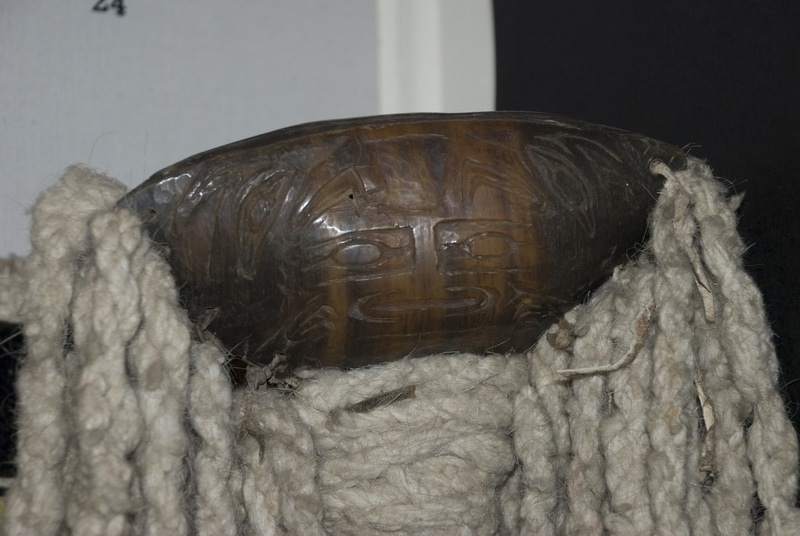
Description
Rattle made from mountain-sheep horn with an incised design and strands of mountain goat wool cascading from the sides. As Emmons writes, On one side is shown in full front face of the Thunderbird, very human, but the bird view indicated by the mouth on each side the two profiles. On the other side the double profile of the Thunderbird in the middle. Good
Context
The original European tribal names and, where possible, current tribal names have both been given in separate GLT fields.; Emmons provided detailed information with the rattle in a letter, 04121934. This is the original ceremonial rattle of the Salish people of the continental shore of British Columbia about the mouth of the Fraser River in the Musqeam Band and the Salish people of the eastern coast of Vancouver Island from Comox to Cowichan including the Comox Nanaimo and Cowichan bands. As I say this was the original proncative rattle of this people. The mountain sheep was and still is a habitant of the more inland mountains beyond the coast range, but in later years the hunting of the sheep was not carried on, so horn could not be obtained, when its place was taken by other materials such as cow' s horn, sheet copper, brass and iron, and rattles of wood of any neighbouring tribes, all of which rattles were hung with the twisted strands of the wool of the Rocky Mountain goat. This decoration too was original with these Salish bands. They wore their ceremonial blankets of like strands of this wool. These rattles were rudely carved and in almost every case the Thunderbird was shown in full front view or profile. The rattle was used at death ceremonies, at potlatches and particularly when giving names to older children and for some old custom they pointed the rattle three times and at birth of child. The rattle was called Schl-mocok-Tux (rattle for hand), the goat' s wool decoration Fai-He. Rattles made of the horn of Rocky Mt. sheep are undoubtedly the rarest kind of rattle on the continent. Judging from the colour, which is naturally white, this specimen is more than 100 years old. Collected by: Emmons.Commander.G.T
Item History
- Made in British Columbia, Canada
- Received from George T. Emmons during 1934
What
- Name
- Rattle
- Identification Number
- 1934.1072
- Type of Item
- rattle
- Material
- horn, mountain sheep horn, wool and mountain goat horn
Who
- Culture
- Coast Salish: Quwutsun'
- Received from
- George T. Emmons
Where
- Holding Institution
- MAA: University of Cambridge
- Made in
- British Columbia, Canada
When
- Acquisition Date
- during 1934
Other
- Keyword
- Masques and Drama; Ceremonial Objects; Music